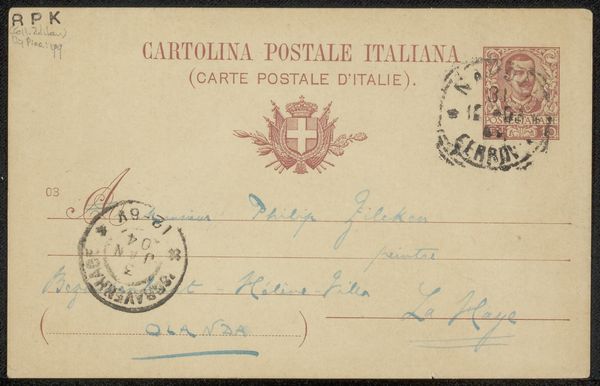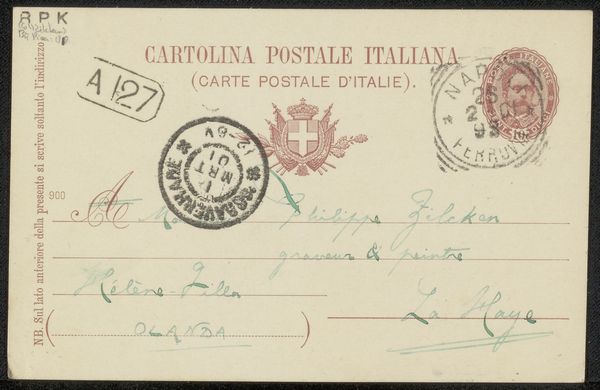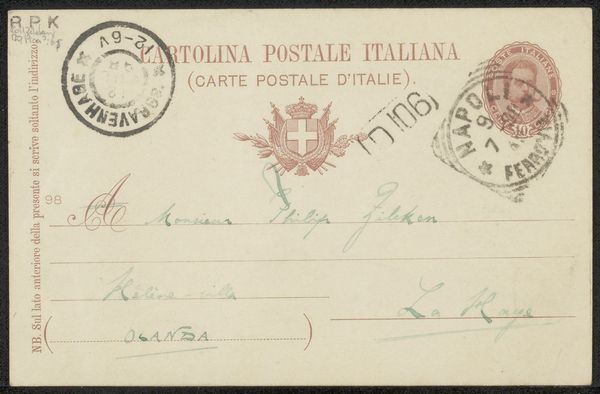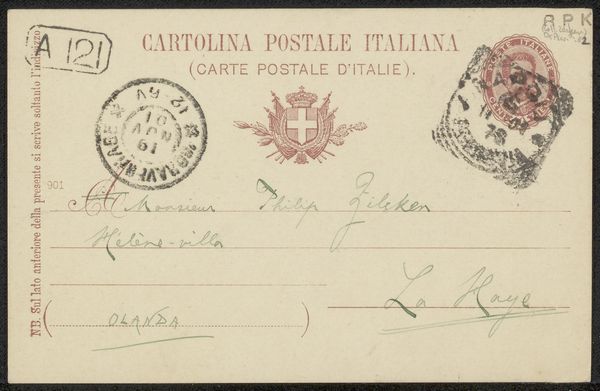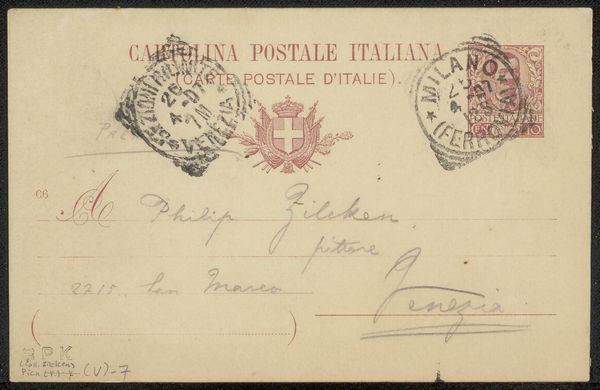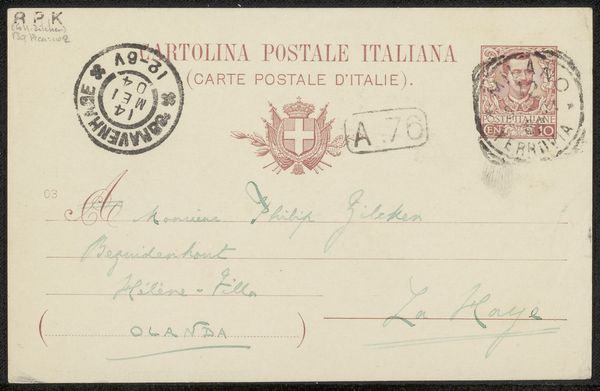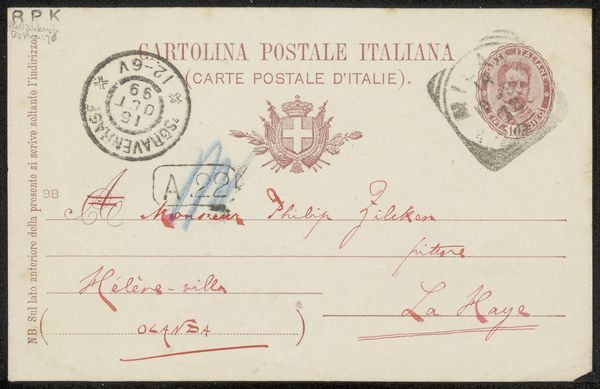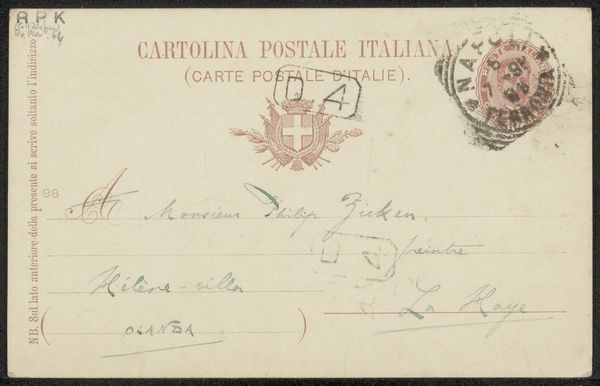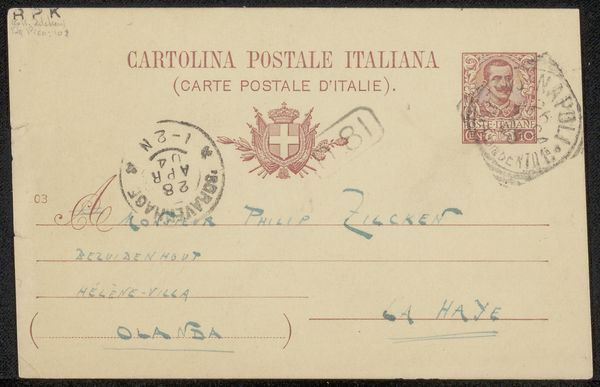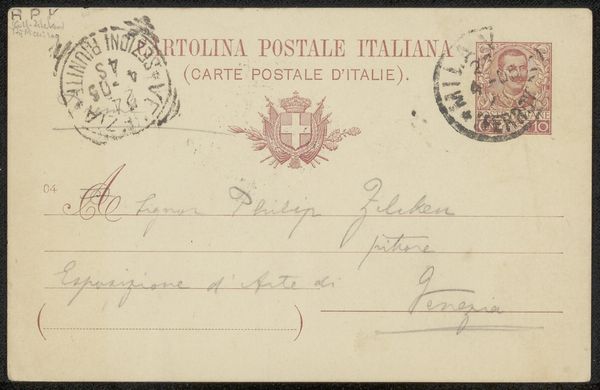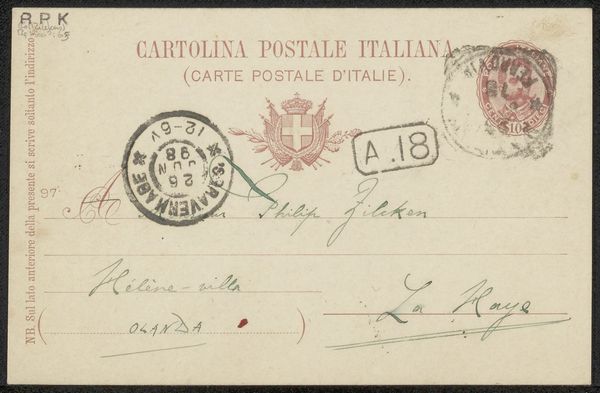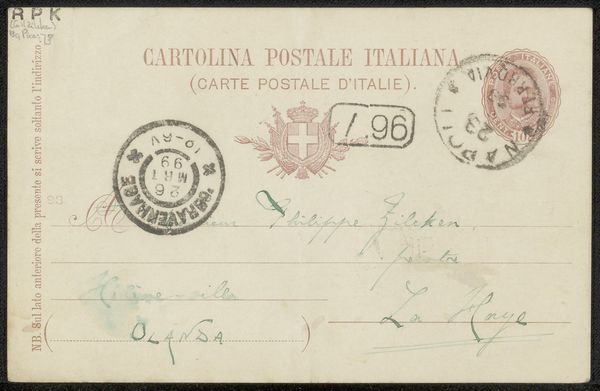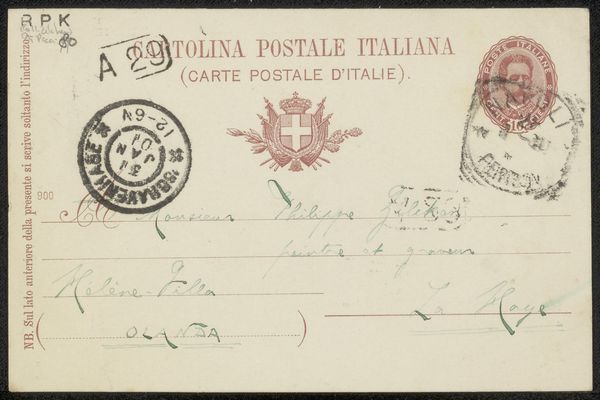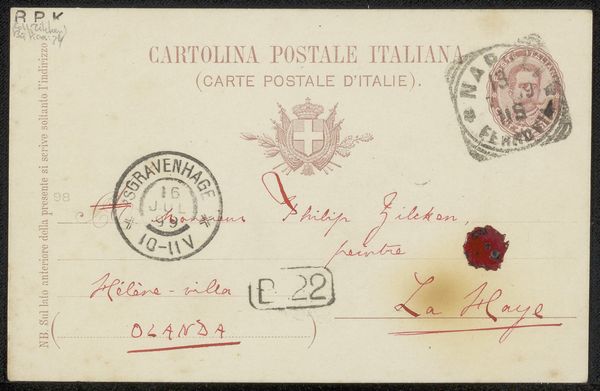
print, paper, photography
#
portrait
# print
#
paper
#
photography
#
calligraphy
Copyright: Rijks Museum: Open Domain
Curator: We’re looking at a printed postcard addressed to Philip Zilcken, possibly dating between 1903 and 1916. The card includes photography, calligraphy, and stamp markings. Editor: It's a snapshot of a bygone era. The handwritten script and the faded postal markings create a palpable sense of distance, a whisper across time. It gives me a wistful, almost melancholic feeling. Curator: The material components offer clues. Paper stock was more fibrous then; inks oxidized differently. The print would likely be made from a collotype process or possibly even a halftone screen if a photograph was involved, suggesting industrial means of production adapted for personal communication. Editor: The imagery—the Italian crest, the fragmented portrait on the stamp—it speaks of national identity and bureaucratic processes intertwined. I wonder, what symbols and meanings were immediately obvious to its sender and recipient? Did the imagery signify something beyond mere postal requirements? Curator: Precisely. Examining the context further, who was Zilcken? What role did these types of correspondence play in that society? Consider the cost of postage then, versus wages... communication like this held specific social values attached to its manufacture and dispersal. Editor: Right, that interplay between official imagery and personal inscription is fascinating. It hints at layers of public and private life, how messages can carry not just words, but coded sentiments reflected in design, the selection of particular stamps. Curator: Analyzing the imprinted symbols further, and the choices made in terms of calligraphy – we start unpacking the material conditions affecting personal expression in an era so vastly different from today’s instant electronic communication. Editor: Agreed. Ultimately, it’s a compelling memento. Seeing these personal and civic emblems melded in a transient document highlights the weight of history, etched on fragile materiality. It definitely prompts reflections on how even the most banal everyday articles act like echoes and ghosts of bygone years. Curator: Indeed, what begins as a piece of discarded postal communication opens up inquiries across social strata from sender to maker to courier to the final intended eyes. Thank you.
Comments
No comments
Be the first to comment and join the conversation on the ultimate creative platform.
